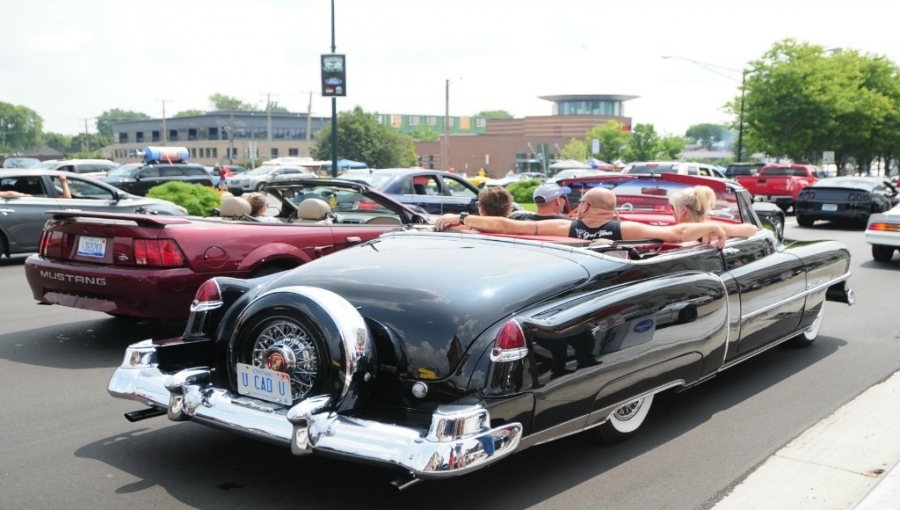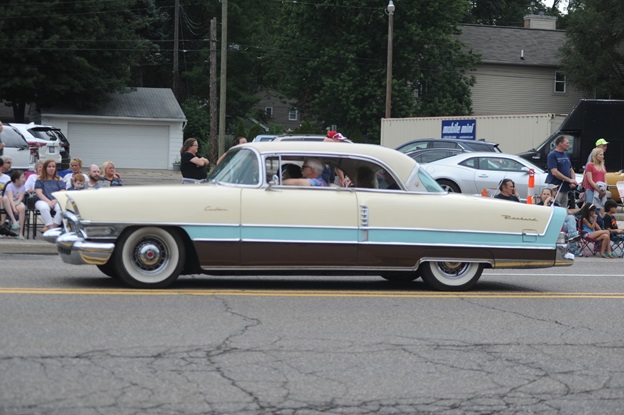Car-Crazy Cities On The Mend: Detroit and Medellin
August is the month when both Medellin and Detroit celebrate classic cars — and the joyful return of positive vibes — via the “Desfile de Autos Clasicos” here and the gigantic “Woodward Dream Cruise” in Detroit.
Both events — August 11 here, August 18 in Detroit – draw millions of spectators and participants, although the Detroit version is by far the world’s largest, with more than 40,000 classic cars — and tens of thousands of more-modern cars accompanying them.
These amazing cars roll along Woodward Avenue, Detroit’s most famous highway, where the world’s first paved road debuted more than a century ago – in concert with the world’s first mass-produced cars overwhelmingly made in Detroit and nearby cities.
The classic-car parades also are symbolic of renaissance underway in two cities that once led their respective nations in industrial output — then went through horrible decades of violence and decay — but now are enjoying remarkable comebacks.
This year, Medellin’s classic-car parade was preceded by the Colombian national “Concours d’Elegance” show August 4 at the “El Castillo” mansion here, featuring USA-made classic cars of the 1950s, including Packard, Studebaker, Ford, Chevrolet, Dodge, Chrysler, Cadillac, Buick, Oldsmobile, Pontiac and Mercury models (see photo gallery below).
Similarly, Detroit’s Woodward Dream Cruise likewise was preceded by the “Concours d’Elegance” in South Bend, Indiana — a 3.5-hours’ drive from Studebaker’s original home in Detroit — featuring gorgeous cars from the 1920s and 1930s including Duesenberg, Cord, Auburn, Packard, Studebaker and Stutz cars, along with various Studebaker models of the 1950s and early 1960s (see photo gallery).
Medellin Herald attended all of these events, with the USA photos this year provided by Detroit-based photojournalists John and Donna Stormzand.
Our Detroit-region classic-car tour this month not only included the Woodward Dream Cruise, the Concours d’Elegance and the adjacent Studebaker Museum in South Bend, but also the Henry Ford Museum, the Stahls Museum, the Ford Piquette Avenue Plant Museum (the first factory to produce the ‘Model T’), the GM Heritage Center, the stunning Gilmore Car Museum (400 classic cars lovingly displayed at a giant site near Kalamazoo, Michigan), and the iconic Detroit Institute of Arts, featuring Diego Rivera’s world-famous, fresco-style murals depicting auto production in 1930s Detroit.
Detroit also continues to host amazing buildings from the automotive “golden age,” including mansions of the Dodge, Ford and General Motors families, plus art-deco skyscraper jewels including the Guardian Building and the Fisher Building (built for the founding Fisher Body auto-industry family).
While Detroit has lost about 75% of its population over the past 50 years — thanks to the outsourcing of auto production to low-wage nations and areas (starting in the late 1960s and accelerating in following decades) and out-migration triggered by poverty-induced violence — downtown Detroit today has become an exciting, vibrant center with massive restorations, new construction, three new professional sports stadiums, new theaters and lively bars and restaurants.
While Medellin never suffered such population losses despite the violent decades of the 1970s, 1980s and 1990s, Medellin still lacks the sort of industrial growth that otherwise would provide blue-collar jobs to the tens of thousands of low-skilled rural migrants that have resettled here.
The same can be said of Detroit, where most of the job growth isn’t in manufacturing, but rather in high-tech sectors – including Ford’s new electric-car engineering center that is relocating to what had been the long-abandoned, architecturally amazing Michigan Central Railroad station downtown.
Hence a “tale of two cities” for Detroit and Medellin can be said to follow similar trends, with common, higher-tech job opportunities replacing manufacturing jobs, and common, historic problems remaining from mass-migration of low-skilled workers to certain neighborhoods in older cities.






















